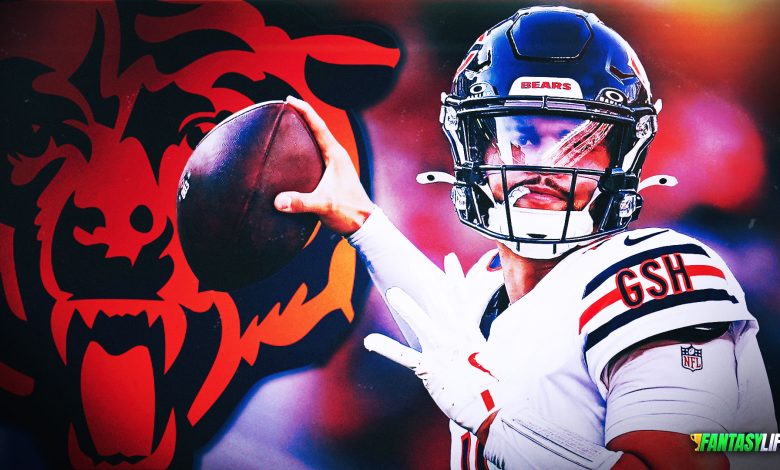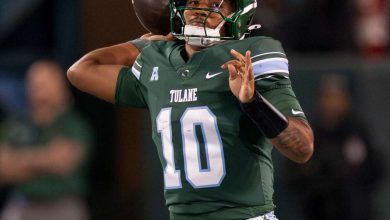Caleb Williams’ Sophomore NFL Season: What Fantasy Football Managers Can Expect from the Chicago Bears’ Rising Force

Caleb Williams’ Sophomore NFL Season: What Fantasy Football Managers Can Expect from the Chicago Bears’ Rising Force
The excitement surrounding Caleb Williams as he enters his second NFL season is palpable, especially for Chicago Bears fans and fantasy football enthusiasts alike. Williams dazzled in his rookie year, displaying a rare combination of athleticism, arm talent, and poise that sparked hope for a Bears franchise eager to return to prominence. But the key question remains: how will the Chicago Bears perform from a fantasy football perspective with Williams at the helm in Year Two? As fantasy managers start building rosters and projecting values, understanding the nuances of the Bears’ offense, Williams’ development, and the supporting cast is essential to make smart, strategic decisions.
First, it’s important to acknowledge the trajectory Williams has set. His rookie campaign was marked by flashes of brilliance tempered by expected rookie growing pains. He showed an uncanny ability to extend plays with his legs, thread passes into tight windows, and lead the Bears’ offense in high-pressure situations. While his stats may not have been elite immediately, the promise was undeniable. With a year of NFL experience under his belt, the sophomore leap often involves increased consistency, improved decision-making, and a deeper rapport with teammates — all of which bode well for both real-life and fantasy production.
For fantasy football managers, quarterback performance is a critical cornerstone, especially in modern scoring formats that reward passing yards, touchdowns, and rushing ability. Caleb Williams’ dual-threat skill set is a massive advantage. He is not just a pocket passer; his rushing ability adds a valuable dimension to his fantasy ceiling. Quarterbacks who can scramble, gain yards on designed runs, or escape pressure for big plays often rack up fantasy points quickly and provide a safer floor than those who rely solely on passing. As the Bears continue to shape their offensive identity around Williams, expect him to be a focal point not just in the playbook but also in the fantasy realm.
The Chicago Bears’ offensive scheme under the current coaching staff aims to maximize Williams’ versatility. They’ve invested in versatile playmakers around him, from dynamic wide receivers to talented tight ends and a solid running back group. This balance can help alleviate some of the pressure on Williams to carry the team entirely through the air. For fantasy managers, this means the offensive production could be more well-rounded, offering opportunities across multiple positions. But Williams, as the engine driving the offense, remains a high-upside fantasy asset — especially in leagues that reward quarterback rushing statistics.
Wide receivers on the Bears’ roster are poised to benefit from Williams’ ability to deliver accurate passes and make plays under pressure. Fantasy managers should watch how the passing game evolves, particularly with emerging talents expected to step into larger roles. If Williams’ chemistry with his top receivers improves, this could translate into a steady stream of targets, receptions, and big plays downfield — all gold in fantasy leagues. The Bears’ commitment to developing a vertical threat could stretch defenses, opening up additional opportunities for yards after catch, increasing overall fantasy output.
Tight ends are another intriguing component of the Bears’ offensive mix. Traditionally underutilized in some systems, tight ends in modern NFL offenses are often pivotal for moving the chains and scoring touchdowns, especially in red-zone scenarios. If Williams and the Bears’ coaching staff prioritize tight end involvement, fantasy managers could see this position emerge as a reliable source of points. A tight end who commands consistent targets and scores touchdowns provides critical positional advantage in fantasy leagues, where top-tier tight ends are often scarce.
Running backs in Chicago’s offense also deserve attention. While Williams’ mobility and rushing contributions add value at quarterback, the running back position typically sees the bulk of rushing attempts and short-yardage work. The Bears have shown a willingness to utilize a committee approach, which can sometimes limit individual fantasy upside due to touches being split. However, the presence of a reliable backfield weapon who can catch passes out of the backfield boosts fantasy potential. PPR (points per reception) leagues, in particular, reward running backs with pass-catching roles, making them valuable complements to a quarterback like Williams who thrives on playmaking.
Looking beyond individual player performance, the Bears’ offensive line play will significantly influence fantasy outcomes. A strong line provides Williams with protection to make clean throws and creates running lanes for backs. Conversely, if the offensive line struggles, it could limit the offense’s effectiveness, increase sacks and turnovers, and reduce overall fantasy production. Improvement or regression in this area will ripple through all skill positions. Fantasy managers should track preseason reports and early-season trends closely, as line play often serves as an underappreciated yet vital determinant of offensive success.
Schedule strength also plays a critical role in projecting fantasy performance. The Bears’ opponents during the upcoming season will vary in defensive quality, especially in pass defense and quarterback pressure. Games against weaker defenses typically allow quarterbacks and skill players to post higher numbers, while tougher matchups may suppress fantasy output. Williams and the Bears’ offensive unit have opportunities to shine in favorable matchups, and savvy fantasy managers will capitalize by starting Bears players in weeks with advantageous schedules. Balancing these considerations helps optimize lineup decisions and maximize weekly scoring.
Another key factor is the Bears’ offensive philosophy in terms of game script. Teams trailing in games often pass more, inflating passing stats and fantasy numbers for quarterbacks and receivers. If Chicago finds itself in high-scoring, competitive contests, Williams’ fantasy value could soar due to volume. Conversely, if the Bears establish early leads and lean on the running game to control the clock, passing opportunities might diminish, potentially capping fantasy upside. Monitoring the Bears’ season trajectory and game flow patterns is essential for making timely roster moves and start/sit calls.
Injury risk, always a concern in the NFL, is particularly relevant for Williams given his style of play. Dual-threat quarterbacks face more contact and thus higher injury risk compared to pocket passers. Fantasy managers should weigh the upside against the possibility of missed games or limited performance due to injury. Depth at the quarterback position and available replacements become critical considerations, especially in leagues with weekly start requirements. Prudent fantasy players might consider handcuffing strategies or maintaining backup options to mitigate risk.
Moreover, Caleb Williams’ leadership and intangible qualities often get overlooked in fantasy discussions but are crucial for real-life and fantasy success. His ability to command the locker room, rally teammates, and make clutch plays under pressure can elevate the Bears’ overall offensive output. When a quarterback exhibits confidence and poise, it tends to inspire the entire offense, resulting in more consistent production and fewer turnovers. These subtle yet impactful traits can translate into steadier fantasy performances week-to-week.
For fantasy managers targeting Bears players, draft position and player cost are strategic elements to consider. Williams’ second-year status often means his ADP (average draft position) will be influenced by rookie hype fading but increased expectations growing. Smart managers will look for value spots where Williams or his key skill position players are undervalued due to rookie inconsistency or questions about the offense’s direction. Identifying breakout candidates or undervalued assets in the Bears’ offense could lead to significant advantages later in drafts or in-season acquisitions.
Finally, the evolving NFL landscape and defensive adjustments to Williams will shape his fantasy trajectory. Opponents will study his tendencies and attempt to limit his strengths. Williams’ ability to adapt, develop new skills, and maintain a high level of play against increasingly tough defenses will determine his long-term fantasy viability. For the Bears, success in designing creative game plans and adjusting to defenses will be vital to keeping their offense—and fantasy managers’ lineups—productive.
In conclusion, Caleb Williams’ second NFL season holds immense promise for the Chicago Bears from a fantasy football perspective. His dynamic dual-threat skill set, combined with a supportive offensive cast and coaching staff committed to maximizing his talents, sets the stage for exciting production across multiple fantasy positions. While challenges remain — including offensive line play, schedule difficulty, and injury risk — Williams and the Bears have the tools to become a formidable fantasy force. Fantasy managers who understand the subtleties of the Bears’ offense, monitor evolving dynamics throughout the season, and seize value opportunities will be well-positioned to capitalize on one of the NFL’s most intriguing young quarterbacks as he takes the league by storm.









